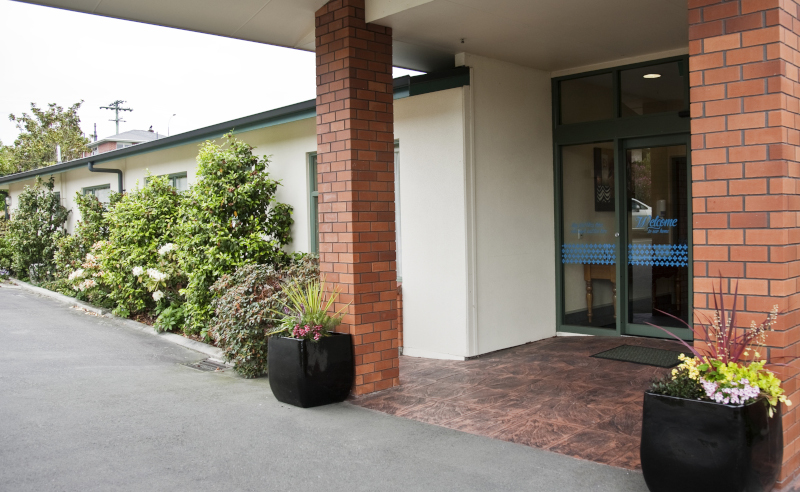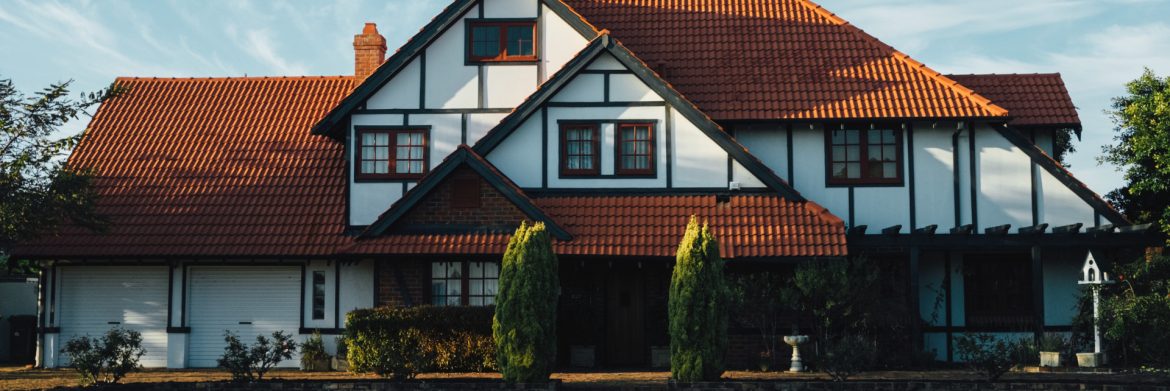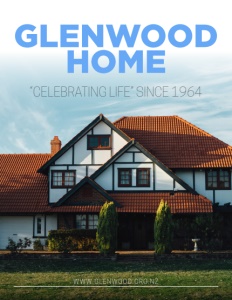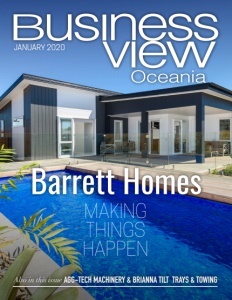Glenwood Home
“Celebrating Life” since 1964
Business View Oceania interviews Veronica Ligteringen, Facility Manager of Glenwood Home, for our focus on Aged Care & Retirement Villages in New Zealand
From the moment you walk through the door, the special ambience of Glenwood Home captures your heart. Cheery rooms, a safe and peaceful environment and all the comforts and conveniences of home. At Glenwood every life is celebrated and every person is valued. The philosophy of the Glenwood community: to establish and maintain care and support services, includes meeting the resident’s spiritual and welfare needs without distinction of race, creed, nationality or opinion. Located in charming Timaru under the auspices of a Community Trust, Glenwood offers a homely, comfortable quality of life that fully recognises and supports the dignity of people growing older.
Since its founding in 1964, Glenwood Home has earned a solid reputation as a rest home, hospital and retirement village boasting a high level of professional care in the hands of a well-trained and dedicated staff. It all began in 1957, when the Anglican-Methodist Glenwood Home South Canterbury Trust Board was formed in response to a growing need within the district for an additional specially-designed facility for retired and elderly folk. Peter Woodnorth and Michael Gresson, two well-known local citizens on the Glenwood Board, were instrumental in moving the project forward and supervising the planning of the new home on land donated by the Woodnorth family. Glenwood was established on the vision, hard work and generosity of the South Canterbury community.

Glenwood opened in September 1964 with 20 residents. A downstairs wing, catering for an additional eight people, was opened a few years later. Then, in the early 1970s, the Glenwood retirement village was built on land north of the home – a major project comprising 17 one-bedroom cottages designed for independent living. In 2005, a multi-million-dollar redevelopment created two new wings to meet hospital standards. Sixteen rooms with ensuites were added, along with a new reception and administration area, staff offices and service rooms. Completing the development was a comfortable lounge, a wonderfully sunny annexe called “Sunshine Alley” and a sheltered enclosed courtyard.
Veronica Ligteringen, Facility Manager of Glenwood Home, explains, “The Trust board is made up of Anglican and Methodist representatives and a number of people invited from the community. So we have a good balance of people who hold to those principles from Christian groups, as well as board members from the business sector. We have a wonderful nine-member board at this time comprised of highly competent individuals who grasp just how special Glenwood is – and they are committed to both the business side and the wellbeing side of our operations.”
In terms of services, the facility is comprised of two parts: Glenwood Home and the Retirement Village. And three avenues for funding: The Ministry of Health; people’s contributions to their own care; and funding to the Village through Occupation Right Agreements. The Village units are not big by today’s standards but tidy, modern, very appealing and large enough for couples to share. Residents don’t buy the unit per se, they pay for it on the understanding that when they’re no longer living there, ownership reverts back to Glenwood, at which point the unit is sold to the next person. The cost to that, called a Deferred Management Fee, is the cost of the person living there for that period of time. This is standard practice for Occupation Right Agreements.
As a whole, Glenwood Home is comprised of 29 hospital rooms and 13 rest home rooms in a single building. Almost every room has its own bathroom or a shared ensuite. And heat pumps, which were installed in 2014 and have already paid for themselves through reduction in energy costs.
According to Ligteringen, “We used to be 100 percent rest home but the New Zealand government has over recent years, made a commitment to support people independently in their own home with services going into an individual’s home for as long as possible. The demand for a relaxed retirement in a rest home has changed. People now come into care when there are no other options for them. Because of this, our rest home numbers were dwindling and we had hospital-sized rooms but we were not accredited to provide hospital level care. Then three years ago we were endorsed to accept hospital level residents. This has really changed the care needs in the home. Now we are catering for more complex health needs, with the majority of our residents requiring hospital level of care services. That’s been quite a development.”
Ligteringen has been at Glenwood Home for four years and finds aged care to be an interesting and multifaceted industry. She reflects, ‘I think the important thing to bring to my role is not just management skills but some understanding of clinical needs and processes and of the health setting in general. Part of the reason I was selected for this job is my background in health.”

Glenwood currently employs a staff of 63, primarily part-time. Nurses work about 32 hours, not necessarily full time, which gives them an option to pick up an extra shift if somebody is unwell or away on leave. New care staff have to go through orientation – getting some basic training and making sure they understand the job. Glenwood has a contract with Career Force for workplace training for Level 2, Level 3, and Level 4 certificates and employees tend to stay. The longest serving staff member has been working at the Home for 28 years; quite a number of other care staff have been there a long time and there are many new employees, as well.
Glenwood is the place of choice for many in the Timaru community and there is a wait list –mostly for rest home care. “You can imagine that people in a rest home survive a lot longer than someone in hospital level care,” says Ligteringen, “so the beds for rest home care don’t come available very often. But people love Glenwood and they often have their heart set on Glenwood as their place of choice. Once they come here, they can transition from rest home to hospital level as their needs increase. It breaks our heart if somebody has to leave to go into high level care, because this is their home. That very rarely happens; we do everything we can to keep them here including moving them into a larger hospital room, or to be closer to the Nurses’ Station.”
Home-made meals are a selling point for Glenwood. Fresh local produce is used as much as possible and all the cooking is done onsite. The idea is to make it as much a home as possible for people; the lovely aroma of home baking coming from the kitchen is a definite attraction. And the cook is directly answerable to residents, who don’t shy away from making their preferences known. Menus are set on a four-week rotational schedule and approved by a dietician. Because the nutritional requirements of residents vary, particularly as they age and are becoming frail, it’s important that they have a good balanced menu and appropriate choices according to their dietary needs, personal health issues and ability to swallow and eat. The environment enhances the residents’ dining experience. In 2018, the dining room was extended into a bright, modern, atrium-style dining area. A beautiful space architecturally designed by Rushton Architects that boldly declares Glenwood as a place that is up to date and focuses on professionalism and quality with a welcoming, warm appeal.
Emergency planning is critical for an eldercare facility. Ligteringen recalls, “I came to Glenwood from Christchurch, where they had suffered major earthquakes. Timura is only a two-hour drive away, so they felt the quakes but didn’t suffer as much damage, although there were earthquake payouts to Glenwood Home at that time. So when I came here, I wanted to know what was in place for emergencies and I thought we should get a generator. But being a not-for-profit, we didn’t have a lot of money at that time to shore up our emergency planning. Then, about 18 months ago when we were building the dining room, the board decided to get a small generator that would service that whole living area and our essential kitchen services.”
The board also purchased a modern, versatile barbecue for cooking in case of an emergency, and a log burner to keep the residents warm in the event of a power outage. In addition, enough extra supplies were stored away to feed Glenwood residents and support the Glenwood community for seven days. “The reality in New Zealand is that if there is a major earthquake, sometimes the Civil Defence people can’t get to you in a short time frame,” says Ligteringen. “So we’ve done a lot of work to be more self-sufficient. We’ve trained our staff in the critical incident management system that hospitals use. And we’ve created a business plan for sustainable services should there be an emergency. To me, that reflects the care and the ongoing development that Glenwood is committed to.”
In a nod the to the importance of a great team, Ligteringen adds, “Recently, we were audited and accreditation here is usually three years, but as a place that runs efficiently and maintains high standards all the time, we actually got four years accreditation. That’s very hard to achieve. Glenwood really is a wonderful place to live and work and we get compliments all the time from professionals and people in the community. The quality of care our staff provide to our residents is superb and they really do care with compassion and kindness and love. For them it is a calling, not a job. They are special people.”
AT A GLANCE
Glenwood Home
What: Community trust operated Rest Home, Hospital and Retirement Village
Where: Timaru, South Canterbury, New Zealand
Website: www.glenwood.org.nz
PREFERRED VENDORS
nulook Morse – nulook.co.nz
MGZ Employment Law – www.mgz.co.nz






 This information will never be shared to third parties
This information will never be shared to third parties